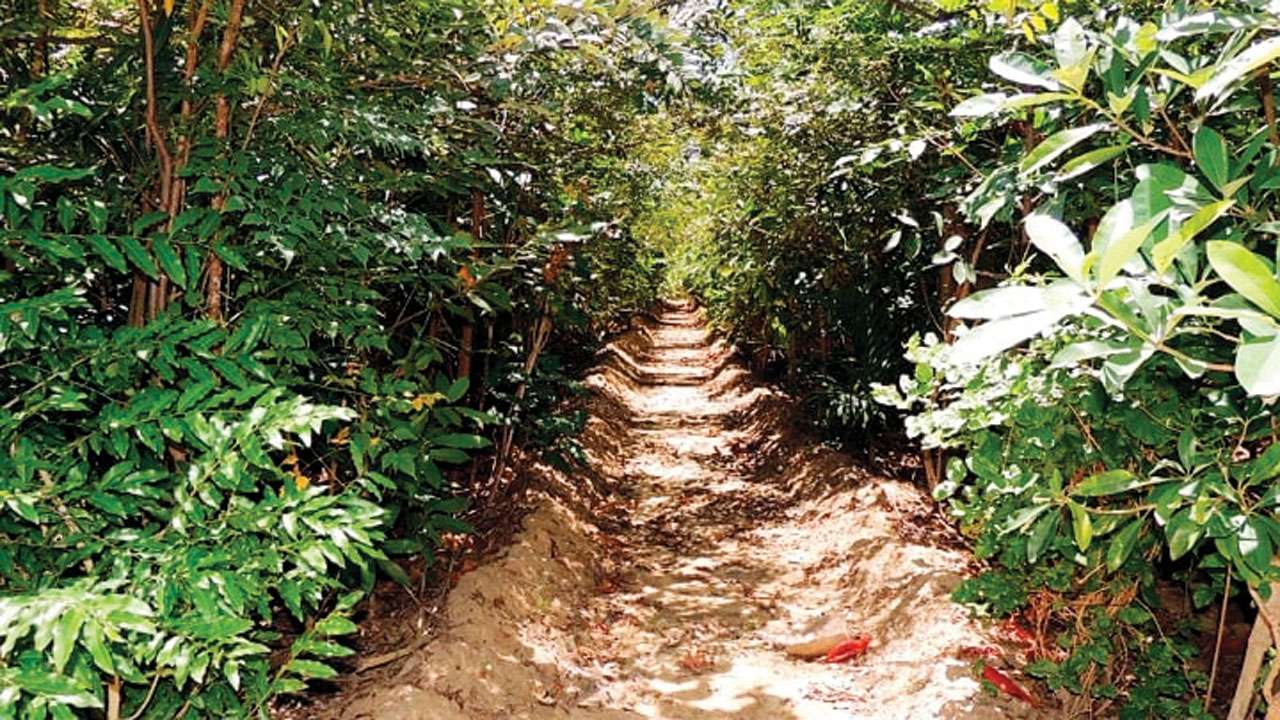
We often look back with nostalgia at some of our earlier days of work or life. One such fragrant, welcoming and rejuvenating memories is of the lovely garden with a soul at the DDO's bungalow in Himmatnagar. Our dedicated, gentle, superb gardener, almost seemed to know the language and expression of every tree, plant and bush in the garden. A barely educated person in the formal sense, he had an amazing knack of nurturing the leaves, boughs and bushes with great care and affection. His garden was not a sharply manicured garden that the capital city may boast of. The flower beds were all not filled with flowers of identical shape and colour. There was a certain 'naturalness' that was pleasing and charming.
Each of the plants, of varying sizes and kinds seemed happy, yet disciplined and well behaved, fully self-expressed and yet in harmony. This was rather unlike the workplaces where one had to battle for some order and sense, in the pervading chaos and undercurrents. The garden put one at ease, and yet the plants behaved with a disciplined freedom, giving the garden an elegant identity. How I wished and hoped back then, and even now that these qualities filled all our human ecosystems and spaces. Where the chaotic and quixotic conflicts and dysfunctional relations were transformed into spaces replete with goodwill, order and harmony.
Over the years, I have seen some beautiful gardens in various cities but the spirit of the Himmatnagar garden was usually amiss. A few years ago, on a chance visit to an artificially created forest in the heart of a bustling city, Bangalore, I had an 'aha moment', as it almost felt like a real sibling of Mithabhai's garden. As I walked through this forest and learnt more about it, I came across a whole new world of forestation, that was taking place across the globe. As if giving a fitting reply and rebuttal to the maddening pace of constructing buildings that define the landscape of cities, there is a movement of 'constructing' forests in cities across the world. This is attributed to the 91-year old Akira Miyawaki, a Japanese botanist, and specialist in plant ecology. He is a 'true construction tycoon', who has dedicated his life to the study, nurturance and massive 'construction of natural forests' across the globe.
As articulated by a champion of the Miyawaki method, 'This method includes planting trees as close as possible which not only saves space, but the planted saplings also support each other in growth. This also blocks sunlight reaching the ground, thereby preventing the growth of weed.' Over the years, Miyawaki has developed huge seed banks of local, natural trees of the 'potential natural vegetation', or native to the locality. Interestingly, in Japan, too, he found that such natural forests were mainly found adjoining temples and cemeteries. There was a traditional belief that 'gods dwell in these forests' and such forests lining Shinto shrines are known as Chinju-no-mori. Miyawaki leveraged this concept, carrying and planting such forests 'where gods dwell' amidst crowded cement-jungles and slums.
Pradeep Tripathi, another champion of this movement adds "Miyawaki method helps to create a forest in just 20 to 30 years, while through conventional methods it takes anywhere between 200 to 300 years. This technique helps us to plant a different variety of trees in the same piece of land. We also specifically plant trees native to a particular region, because of which these trees don't require much maintenance. Also, we do no use any form of chemical or artificial fertilizers."
As we bear the intense humidity with indulgence, as we eagerly await the monsoons, this is an activity that all of us could take up in our own neighbourhoods and urban spaces. There are experts of this method available across the country now, including our own Ahmedabad. I, too, contributed my tiny bit by planting saplings at a school a few weeks ago to create a 'Miyawaki' urban forest.
Equipped with all these possibilities including the Miyawaki method, we can surely bank on giving a colourful, quick and verdant twist to our cities and towns.
The author is a Harvard-educated civil servant & writer, and has worked in the education sector
jayanti.ravi.dna@gmail.com